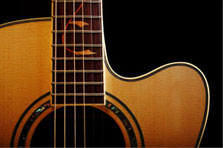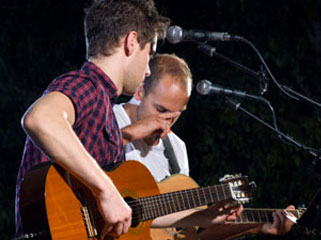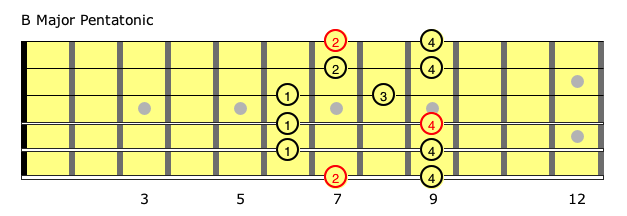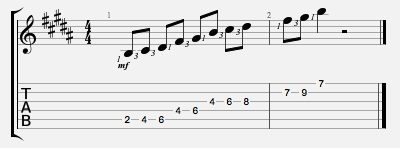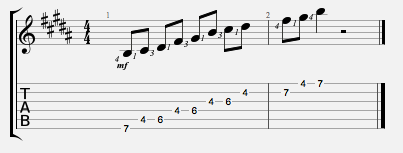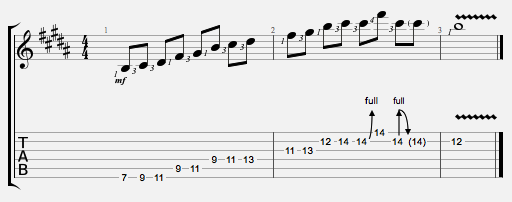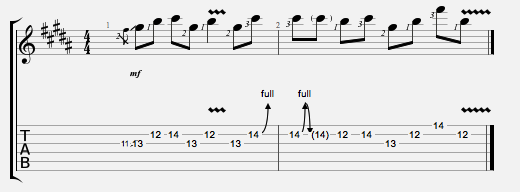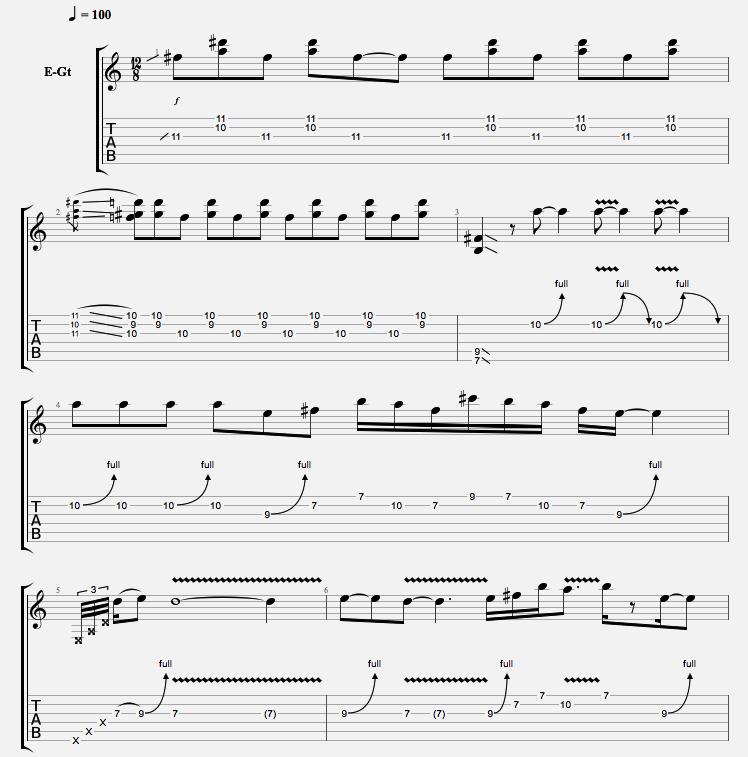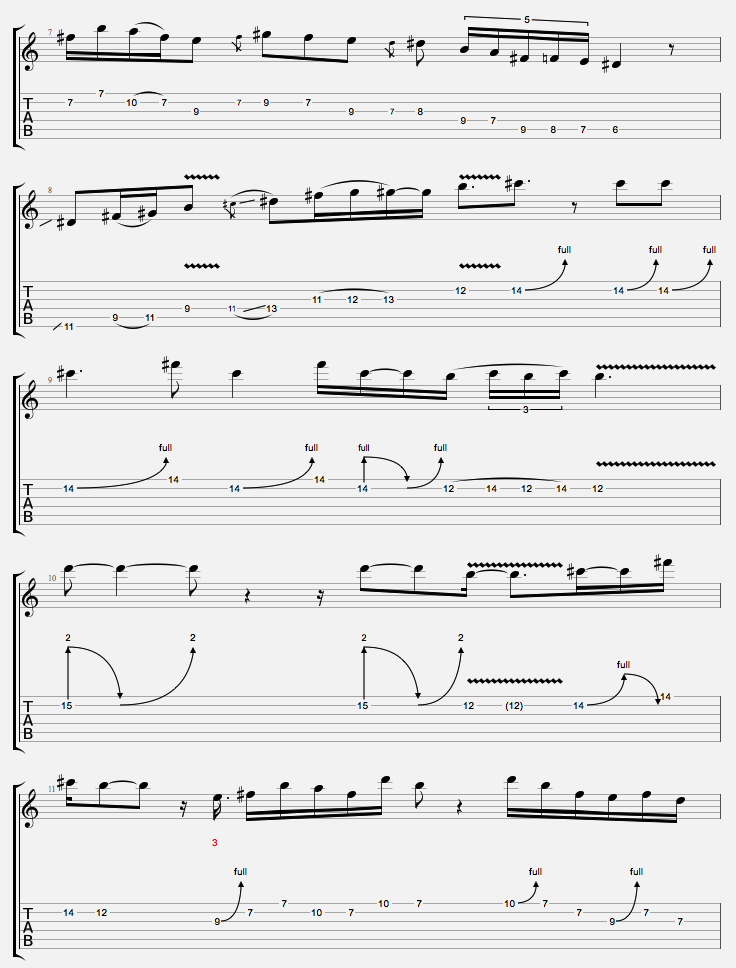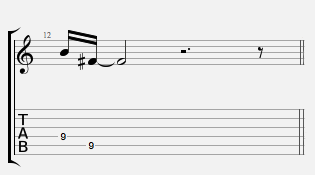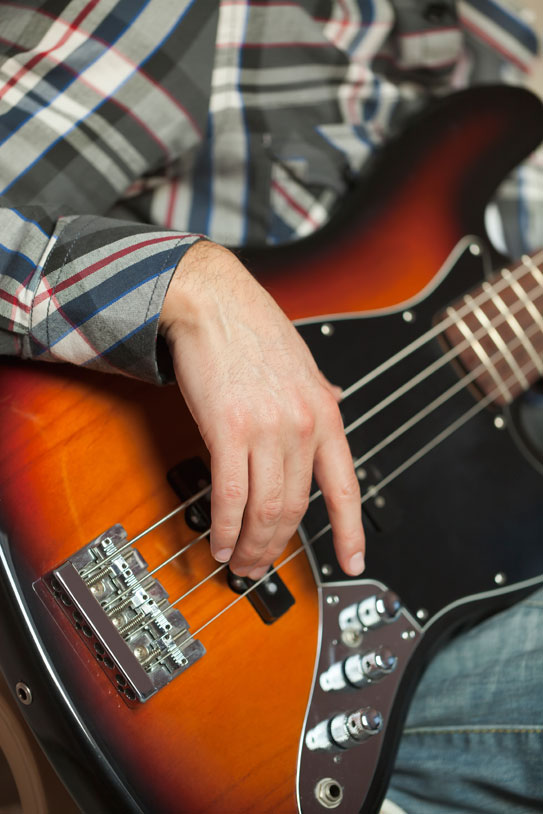
Blog
Aug 09 2015 |
The Pentatonic Major ScaleBy: Frank Macri Posted in: Blues Guitar Lessons In the past I’ve written an article about the pentatonic minor scales, a basic foundation for developing a guitarist’s soloing. It’s only natural to focus this lesson on the pentatonic major scales. Like the pentatonic minor scale, the pentatonic major is a five tone scale and is extracted from the major scale. For example, the B major scale is comprised of B-C#-D#-E-F#-G#-A#. The pentatonic major scale is B-C#-D#-F#-G#, which is the root, major second, major third, perfect fifth, major sixth, thus eliminating the perfect fourth and major seventh from the major scale. Example one is a two octave scale of B major pentatonic. Examples 2-4 illustrate commonly used fingerings for the pentatonic major scale. Notice how this scale has a sweet sound to it when played over a B major chord? It has all the brightness of the major scale, but can be fingered and phrased more easily. Example 2. Example 3. Example 4. Some players, such as B.B. King use the major pentatonic scale alot. Example five demonstrates this. Example 5.
Many players use both the major and minor pentatonic in their soloing. Jimi Hendrix’s “Red House” is an excellent example of this. Examine Hendrix’s solo in Red House (example 6). Which note does he lean on, and how do they relate to the underlying chords? Remember you have to do alot of listening, copying and experimenting to develop your own natural style. Example 6.
|
